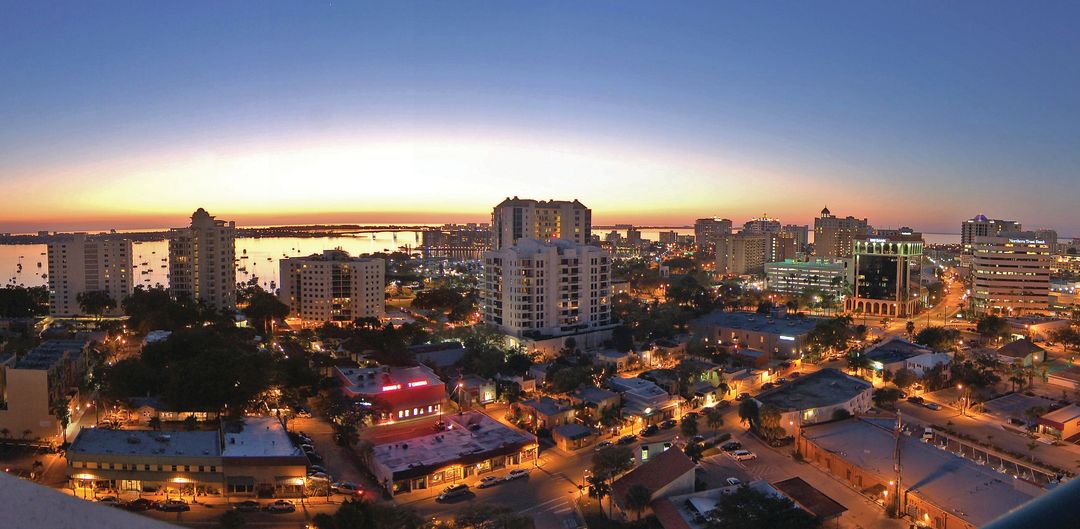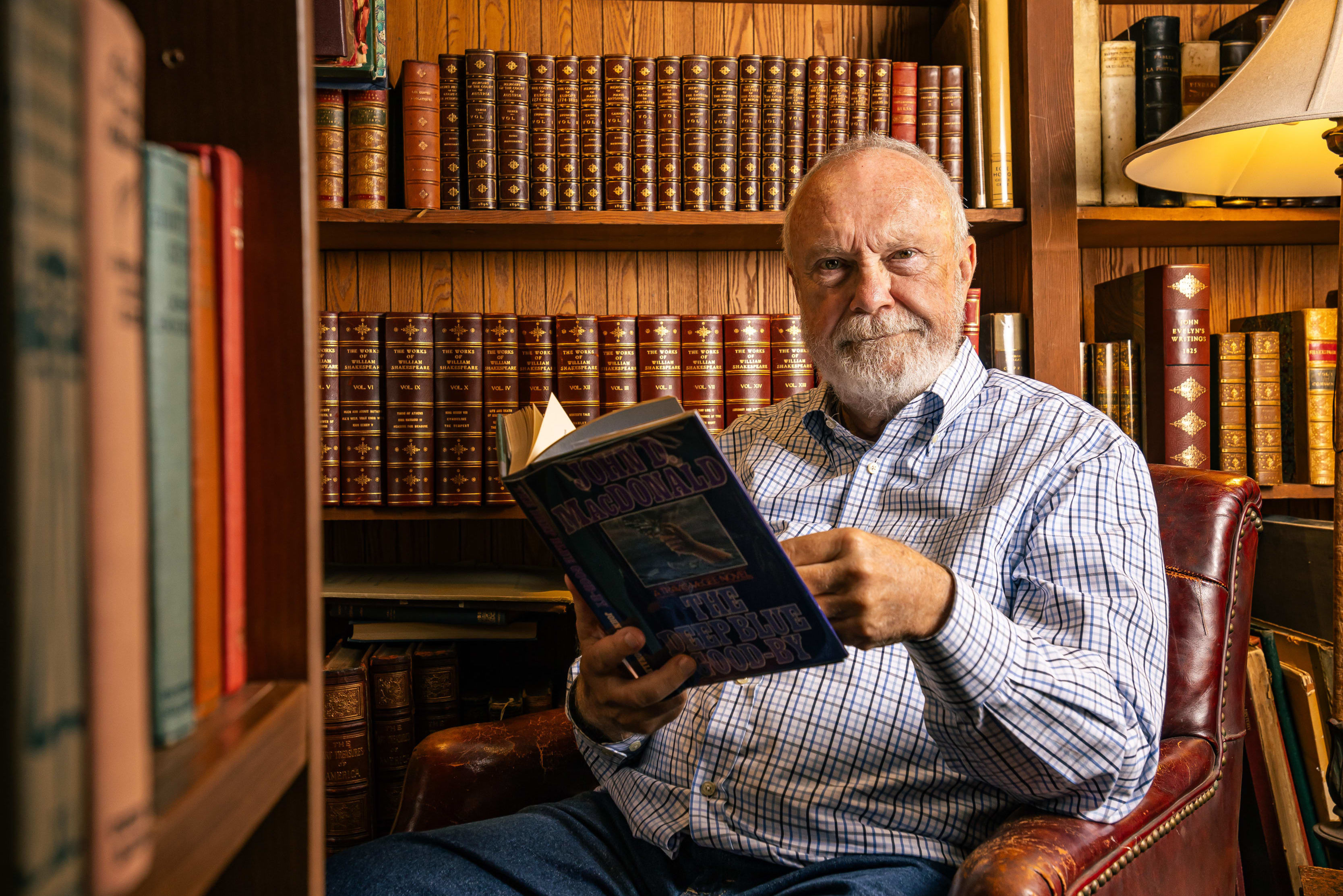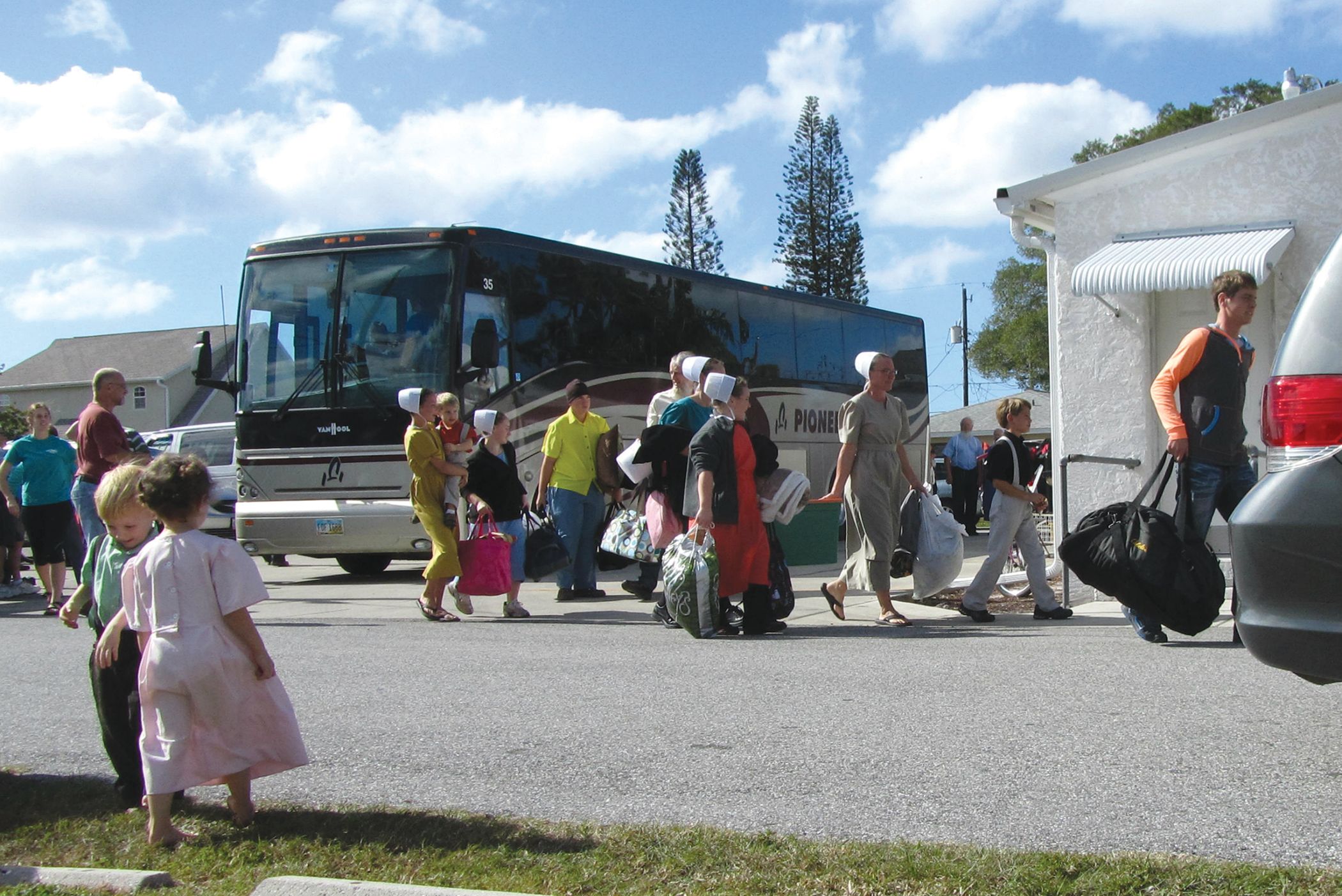The Best of Mr. Chatterbox: Why, at the Height of Its Power, in the Late 20th Century, Did Sarasota Suddenly Collapse?

Image: Detlev Von Kessel
Mr. Chatterbox recently fled to Mexico, on the lam from the IRS, and while there he journeyed into the jungle to explore the ruins of the ancient Maya civilization, which is, he was informed, “shrouded in the mists of history.” Or maybe it was the “hists of mystery.” At any rate, nobody can figure out exactly what all these ruins mean. One evening, felled by a particularly virulent taco, Mr. C’s temperature shot to 103 and fervid visions filled his brain. The next morning, the following article appeared on his campstool as if by magic. Please note in particular the date: June 1, 2995.
Sarasota. Even today, as it lies in ruins, clogged by the kudzu vine and set in an impenetrable jungle, its very name spells mystery. We watch the lizards scurry over the remains of her lavish temples and palaces and we ask ourselves: Who were these ancient people, these Sarasotans? What was their culture like? What gods did they worship? What was their social hierarchy? And most important—why, at the very height of their power (circa 1990 AD) did their civilization suddenly collapse and the population flee, leaving the eternal jungle to reclaim what had always been its own?
Sarasota, while not the largest of the city-states that dotted the Florida peninsula during the 20th century, was certainly the most unique. While it lacked the religious significance of Orlando (with its gigantic temples dedicated to the Cult of the Rat) or the trading-route location of Miami (which by 1985 was totally under foreign domination) or the vastness of Tampa (a trading center of no particular interest) or even the splendor of Naples (where elderly nobles were sent to die), only Sarasota has been sufficiently preserved for us to speak with any authority on the daily life of the inhabitants. So let’s take a step back to ancient times…
Although Sarasota is dotted with large-scale ruins, it is some of the smaller temples that are the most interesting. Foremost among these is the Great Hall of the Women’s Exchange, where the men of the city would bring their wives and exchange them for new ones. The place was enormously popular and on some days, particularly in the balmy winter months, over one thousand woman a day were exchanged. Recent excavations have revealed the existence of certain “red tag” specials, when presumably, a 40-year-old woman could be exchanged for two 20-year-olds.
The largest structure in Sarasota, larger by far than the Egyptian pyramids in square footage, was the magnificent Mall of the 13-Year-Old Virgins. It was here that the maidens of the community were brought to be initiated into the workshop of a complex set of gods, including the JC Penney (the god of polyester), Burdines (the god of upward mobility) and of course, the famous two-headed god, Maas Bros. Here also, the young women were taught the feminine art of painting their faces, adorning their bodies, and giggling. In between lessons they would consume ritualistic foods, including small household pets (“pepperoni dogs”). By the way, the naming of children was rigidly controlled by the authorities, with new names being chosen every five years. For instance, during the period 1985-1990, all female children were automatically named “Ashley,” meaning “she who subsists on Diet Pepsi.”
The Mall was strictly a sanctuary for the women, however. Men congregated on expansively landscaped compounds to play the ceremonial game of Golf, following which they would drink gin, a mild intoxicant made from juniper berries. To this day, it is not known exactly how the game of Golf was played, but it is thought that opponents brandishing clubs charged each other in motorized carts. Two types of clubs were used; iron for the aristocrats and wood for the peasantry.
In fact, every facet of life in Sarasota was regulated by strict rules of caste and status. At the low end of the totem pole were the oddly named “rednecks” who lived in small huts on the outskirts of town and who parked their chariots (often adorned with obscene hieroglyphics) on their lawns at night. Almost as scorned were the “adults.” Not much is known about this segment of society, as they were forced to live in segregated and well-guarded “adult communities” where the housing stock was often made of metal. In addition, they were forced to shop in “adult bookstores” and watch “adult movies.”
For the aristocracy, though, life in ancient Sarasota was sweet indeed. They were a people in love with display and the women adorned themselves lavishly with jewels, particularly ornaments of gold, or in the case of Annette Scherman (the goddess of Prolonged Speech), oddly draped headgear. The men, at least those who had earned the privilege of docking their canoes at the Bird Key Yacht Club, tended to favor loincloths made of loud plaid material. Only nobles were permitted to build their palaces on the water and there evolved a system of powerful female landowners (including Judy Moore, Annette Rogers and Karen Flanigan), who erected glyphs on the front lawns of each residency they owned, often with pictographs. One of these females became so powerful she was decreed an honorary male and awarded a man’s name (Michael Saunders).
But there were seams in the Sarasota social fabric. The merchant class was poorly educated and the giant electronic frescoes that decorated the pediments of their pavilions contained egregious errors of grammar and syntax (“Publix” and “Kash N Karry”). Furthermore, recent research seems to indicate that the consumption of cocaine, long thought to be an activity of the underworld, was actually under the control of the Charlotte County administrator’s office. But none of this can explain the catastrophe that befell Sarasota around 1990 AD, when the entire population suddenly abandoned the site and began a long trek on foot back to Cleveland, Ohio. Various theories have been advanced—crop failure, pestilence, hurricanes, an invasion of hostile Canadians, excessive airport noise—but chances are we will never know for sure.
Perhaps the secret lies in the mysterious and enigmatic ruins that dot the center of the city itself, huge towers dedicated to the Gods of Commerce. Today they stand as silent and empty as they did 1,000 years ago. Why were they built? Why were so many of them never occupied to begin with? Were they meant to be tombs? Or merely monuments to the hubris of those fascinating ancient people, the Sarasotans….



